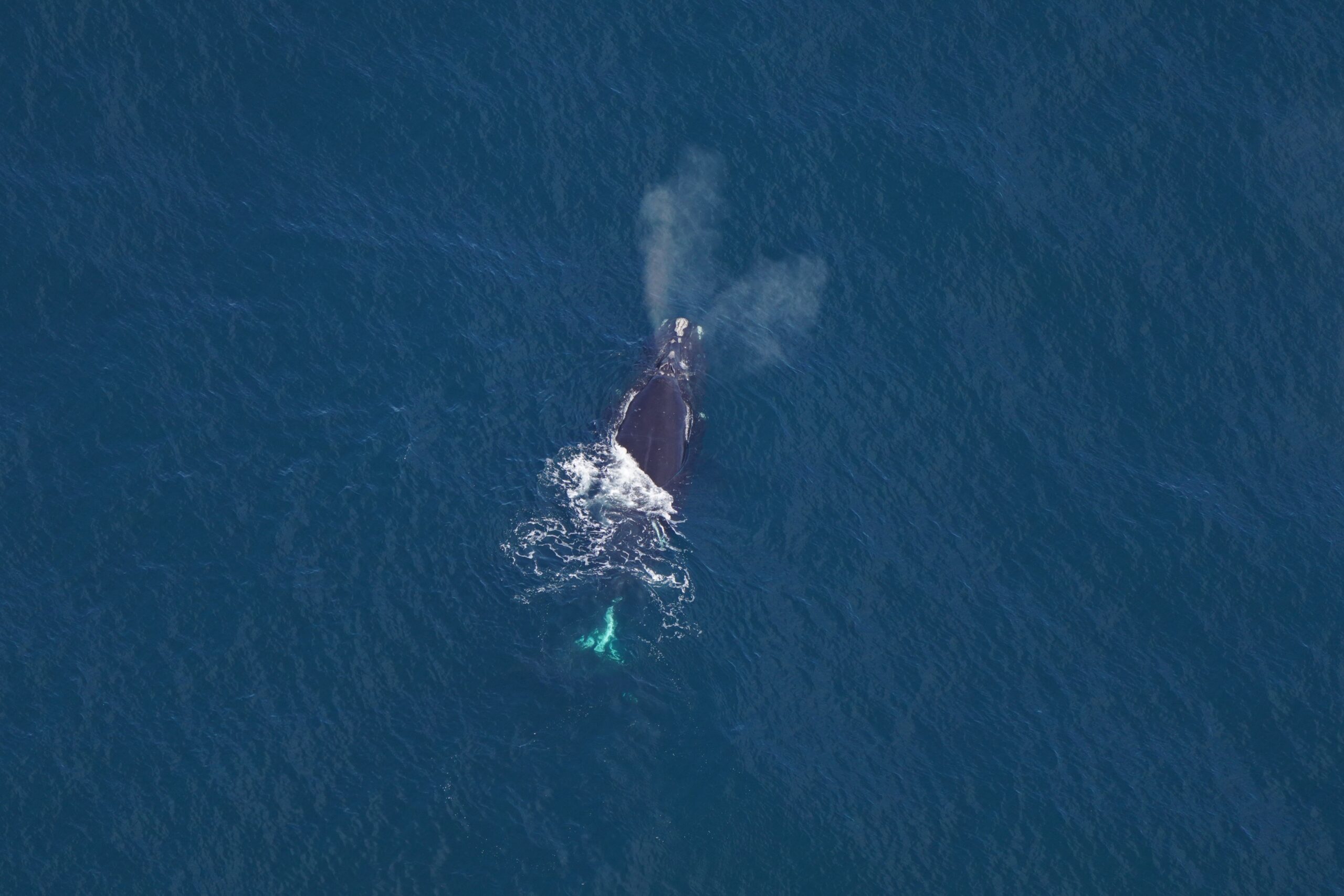
BOSTON, MASS. (May 1, 2025) – The New England Aquarium is drawing attention to the presence of more than 75 North Atlantic right whales sighted in the shipping lanes south of Massachusetts, prompting NOAA Fisheries to designate a voluntary Slow Zone. Ship strikes are one of the leading causes of injuries and deaths for this critically endangered species, making it crucial that vessels slow down to the recommended speed.
**PHOTOS AVAILABLE FOR DOWNLOAD HERE WITH CREDIT TO NEW ENGLAND AQUARIUM**
Scientists from the New England Aquarium’s Anderson Cabot Center for Ocean Life were flying an aerial survey on April 23 when they sighted an aggregation of over 60 right whales 55 miles south of Martha’s Vineyard. The whales, which were likely feeding, were seen in shipping lanes. A second survey on April 28 saw 40 right whales, including 15 additional individuals not seen on the first survey. Researchers have observed groups of feeding right and sei whales in the springtime in this area over the last few years, although this year’s aggregation is one of the largest researchers have seen there.
The majority of whales sighted in this aggregation were adults, including several calving females such as “Calvin” (Catalog #2223). Associate Research Scientist Katherine McKenna was surprised and pleased to see Calvin on the survey.
“This was the first time Calvin had been seen in almost three years, and at her last sighting, she had severe entanglement wounds that were new. A lot of people had given up hope that she was still alive after not being seen for so long,” McKenna said.
In 1992, Calvin was orphaned as an 8-month-old calf after her mother was killed by a large vessel strike. Calvin has since endured eight entanglements and given birth to four calves of her own.
“Calvin’s story illustrates the resiliency of right whales. However, their resiliency alone is not enough for this species to recover. We must reduce the sources of human-caused mortality and injury that are preventing the right whale population from thriving,” McKenna added. As right whales adapt to shifts in the location of their prey, collaborations between researchers, industries, and management officials are essential to minimize the risk of vessel strikes and entanglements for aggregations like this.
Vessel strikes are one of the leading causes of serious injury and death for North Atlantic right whales, and the presence of a right whale aggregation amidst the shipping lanes is cause for concern. Some whales were seen feeding just below the surface, making them harder for oncoming vessels to detect. The survey team observed several large commercial ships utilizing the shipping lanes and was able to alert them to the presence of whales in the area. The sightings have since triggered a dynamic management area or voluntary Slow Zone, which urges mariners to slow down to 10 knots or less to prevent collisions with whales.
“While the location of the whales in the shipping lanes was concerning, in this particular instance, our survey team was able to successfully alert a ship in real time and have them shift course to avoid the right whales gathered together and feeding,” said Associate Research Scientist Orla O’Brien, who leads the aerial survey team at the Aquarium’s Anderson Cabot Center. Mariners are urged to monitor alerts from NOAA Fisheries and reduce speeds to 10 knots within slow zones and Seasonal Management Areas.
The winter/spring season marks the peak time of year for right whale sightings in southern New England waters. In addition to the sightings in the shipping lanes, a large number of right whales are currently feeding in Cape Cod Bay—meaning waters off New England are hosting a substantial portion of the population. The Aquarium’s aerial survey team has flown 32 surveys throughout New England since December and documented over 168 individual North Atlantic right whales, nearly half of the estimated population of around 370. Roughly a third of the whales documented in this most recent aggregation were also seen in January in another large aggregation near Jeffreys Ledge, off the coast of Maine and New Hampshire, but sightings by Aquarium aerial surveys south of Cape Cod have been sparse this season until now.
For more than a decade, the New England Aquarium has conducted aerial surveys over the waters south of Martha’s Vineyard and Nantucket, collecting data on all marine animals with a focus on protected species of whales and sea turtles. In recent years, the Aquarium has expanded survey coverage in New England including coastal Maine, the Gulf of Maine, and the Canyons along the shelf break. These flights help monitor changes in animal populations, identify various species, recognize trends using standardized data, and monitor aggregations. Determining where right whales occur and how they are using habitats provides crucial information that can be used to better protect endangered species like North Atlantic right whales.
MEDIA CONTACT: Pam Bechtold Snyder—617-686-5068; psnyder@neaq.org
